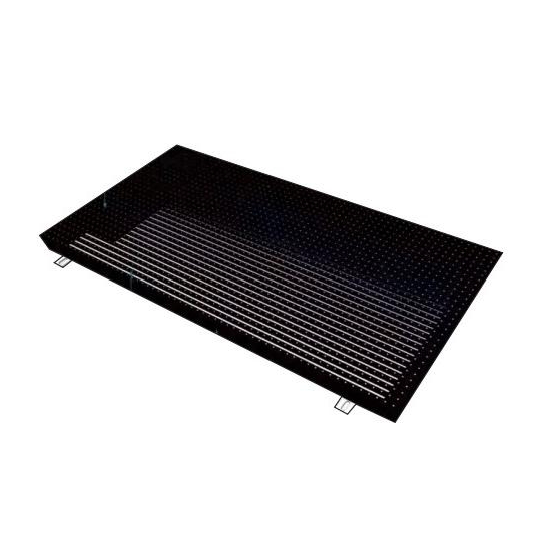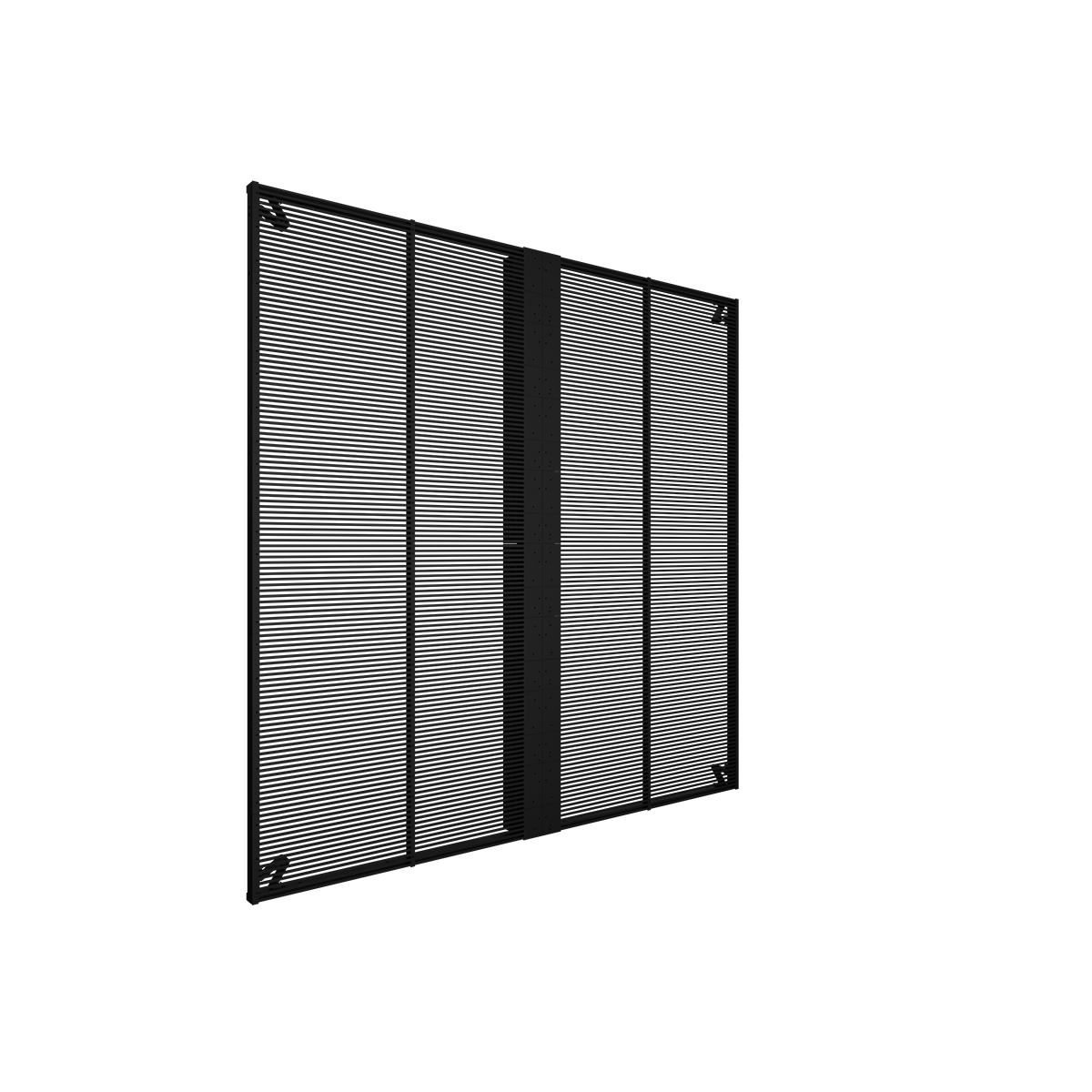In the realm of modern display technologies, side-emitting LED transparent displays represent a significant innovation, blending the benefits of transparency with the vibrant visual capabilities of LED technology. These displays have revolutionized the way digital content can be integrated into physical spaces, offering versatility and aesthetic appeal in various applications.
Definition and Overview of Side-Emitting LED Transparent Displays
Side-emitting LED transparent displays are specialized screens that use light-emitting diodes (LEDs) positioned on the edges of transparent substrates to emit light sideways. Unlike traditional LED displays, where LEDs are placed directly behind the screen, side-emitting LEDs emit light perpendicular to the display surface, allowing for a see-through effect. This innovative design enables the creation of displays that can showcase dynamic content while maintaining transparency, thereby enhancing the user experience without obstructing the view behind the display.
Structure and Functionality
The basic structure of side-emitting LED transparent displays typically includes transparent substrates, such as glass or acrylic, embedded with LEDs along the edges. These LEDs emit light that travels across the substrate, illuminating pixels embedded within the material. The transparent nature of the substrate ensures that light passes through, creating a visually appealing effect where digital content appears suspended in space.
Compared to traditional LED displays that rely on direct light emission from the front, side-emitting LEDs offer enhanced transparency and brightness uniformity. This structure also facilitates thinner display profiles, making them suitable for applications where sleek design and minimalistic aesthetics are desired.
Applications of Side-Emitting LED Transparent Displays
Industries and Sectors
Side-emitting LED transparent displays find applications across diverse industries and sectors, each benefiting from their unique capabilities:
Retail Sector
In retail environments, these displays are used to create captivating window displays that attract attention while allowing potential customers to see products inside the store. By blending digital signage with the physical environment, retailers can enhance brand visibility and communicate promotional messages effectively.
Museums and Galleries
Museums and galleries utilize side-emitting LED transparent displays to showcase exhibits in an engaging and informative manner. These displays can overlay digital information, such as historical facts or interactive elements, onto physical artifacts without detracting from their aesthetic appeal.
Trade Shows and Exhibitions
At trade shows and exhibitions, side-emitting LED transparent displays serve as focal points for showcasing products and services in a visually striking manner. They can be integrated into booth designs to create immersive environments that leave a lasting impression on visitors.

Specific Use Cases
Enhancing Storefront Displays
For retail storefronts, side-emitting LED transparent displays transform traditional window displays into dynamic showcases that capture the attention of passersby. By displaying high-definition images and videos, retailers can highlight products and promotions while maintaining visibility in the store interior.
Creating Immersive Museum Exhibits
In museums, side-emitting LED transparent displays enable curators to enrich exhibitions with multimedia content that enhances visitor engagement. These displays can overlay digital reconstructions or animations onto artifacts, providing context and historical insights in an interactive format.
Impactful Presentations at Trade Shows
At trade shows, exhibitors leverage side-emitting LED transparent displays to present their offerings in a visually compelling manner. Whether used as standalone displays or integrated into booth structures, these screens attract attention and differentiate exhibitors from competitors in crowded event environments.
Comparison with Other Display Technologies
Comparison Overview
When compared to alternative display technologies such as OLED displays, traditional LEDs, and LCDs, side-emitting LED transparent displays offer distinct advantages and considerations:
Side-Emitting LED vs. OLED Displays
Side-emitting LED displays excel in transparency and brightness uniformity compared to OLED displays, which are known for their superior color reproduction and energy efficiency. While OLEDs provide deeper blacks and wider viewing angles, side-emitting LEDs offer enhanced visibility in brightly lit environments and maintain transparency when not in use.
Side-Emitting LEDs vs. Traditional LEDs
Traditional LED displays typically rely on front-facing LEDs, which can obstruct visibility when viewed from certain angles. In contrast, side-emitting LEDs ensure uniform brightness across the display surface and allow for see-through applications, making them ideal for installations where transparency is essential.
Side-Emitting LEDs vs. LCDs
LCDs use liquid crystal technology and require backlighting systems that limit transparency and increase power consumption. Side-emitting LED transparent displays eliminate the need for backlighting, offering energy-efficient operation and improved visual aesthetics in transparent applications.
Strengths and Weaknesses
Strengths of Side-Emitting LED Displays
Transparency: Maintain transparency when not displaying content, blending seamlessly into architectural designs.
Brightness Uniformity: Ensure consistent brightness across the display surface, enhancing visibility in various lighting conditions.
Versatility: Suitable for indoor and outdoor installations, adapting to diverse environmental requirements.
Weaknesses and Limitations
Cost: Initial investment may be higher compared to conventional display technologies.
Viewing Angles: Limited viewing angles may affect visibility from extreme positions.
Technological Maturity: Rapid advancements require careful consideration of future-proofing installations.
Regulatory and Safety Considerations
Regulatory Requirements
The installation of side-emitting LED transparent displays must comply with local building codes and regulations governing structural integrity and electrical safety. Depending on the location of the location of the installation,, additional permits and certifications may be required to ensure compliance with safety standards.
Safety Considerations
When deploying side-emitting LED transparent displays, considerations include:
Brightness Levels: Ensure display brightness is optimized to prevent discomfort or glare for viewers.
Heat Emission: Implement effective thermal management systems to dissipate heat generated by LEDs and ensure the longevity of display components.
Environmental Impact: Evaluate energy consumption and implement energy-efficient practices to minimize the environmental footprint.
Conclusion
Side-emitting LED transparent displays represent a pivotal advancement in display technology, offering a unique combination of transparency, brightness, and versatility for various applications. From enhancing retail experiences and museum exhibits to transforming trade show presentations, these displays continue to redefine how digital content integrates with physical spaces. As technological advancements propel innovation forward, the adoption of side-emitting LED transparent displays is poised to grow, shaping the future of visual communication and immersive digital experiences.
In conclusion, the integration of side-emitting LED transparent displays represents not only a technological evolution but also a paradigm shift in how we interact with digital content in real-world environments. Embracing these displays opens new possibilities for creativity, engagement, and functionality across diverse industries, driving forward the evolution of visual communication in the digital age.
















